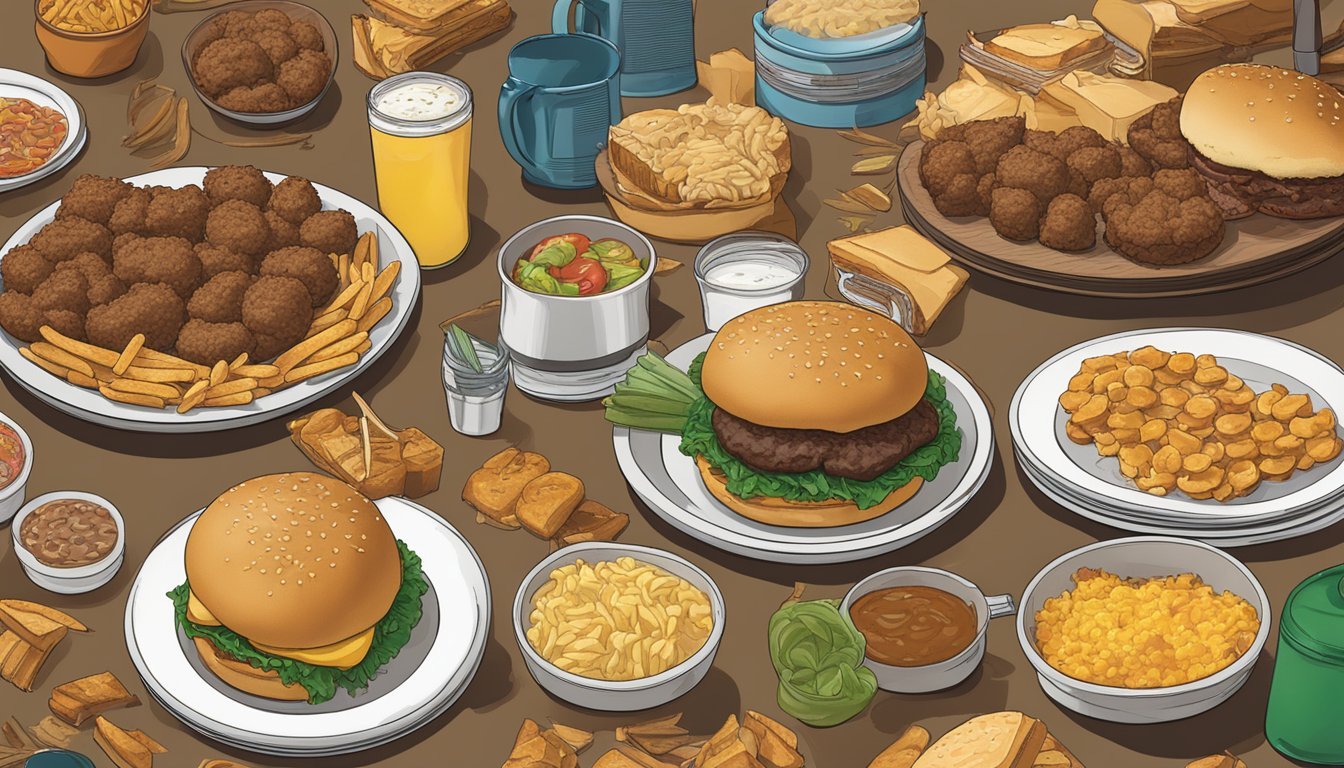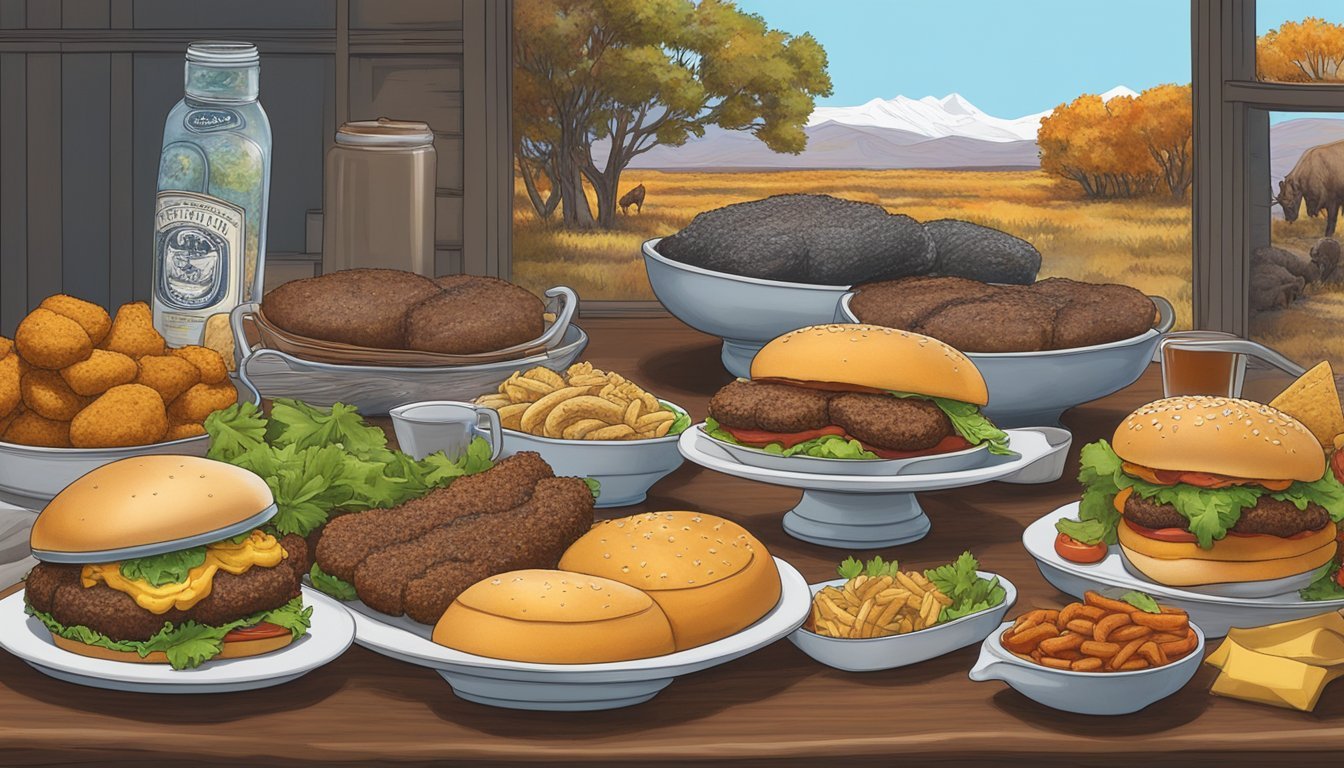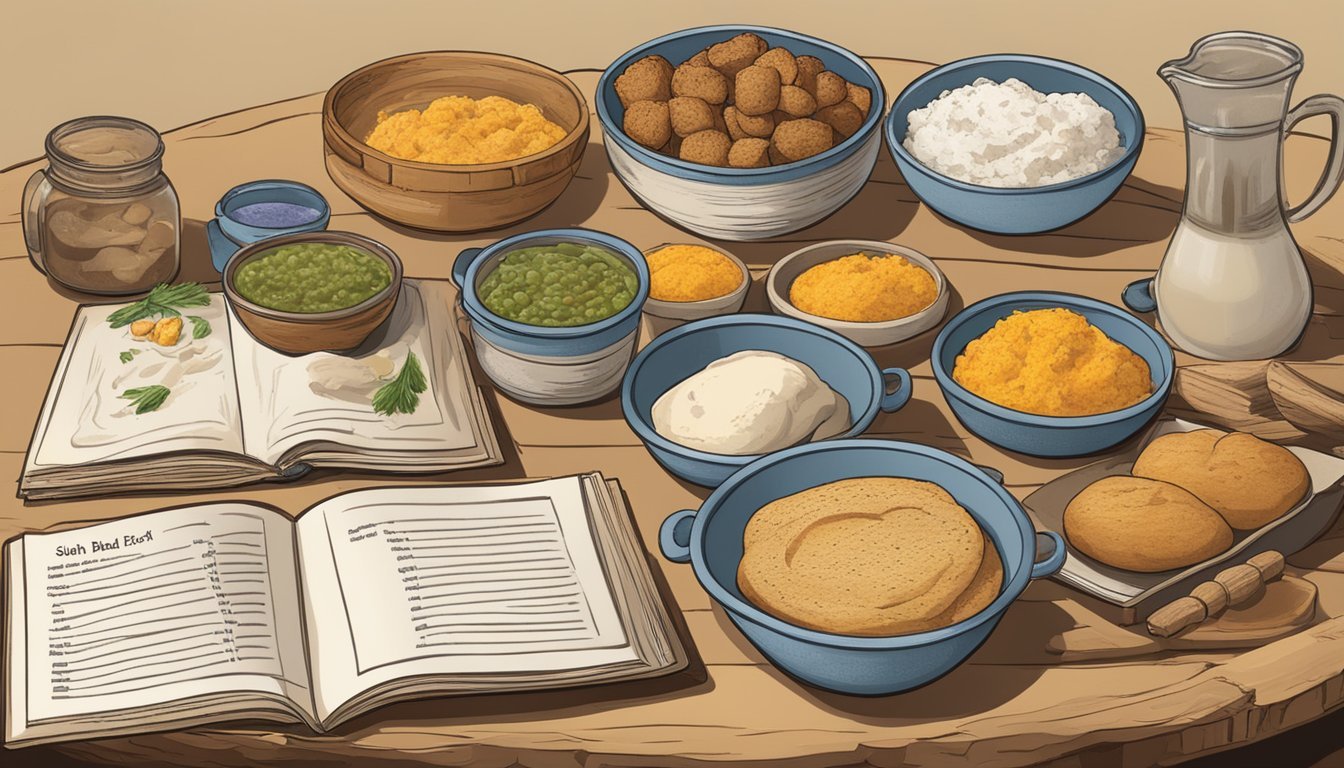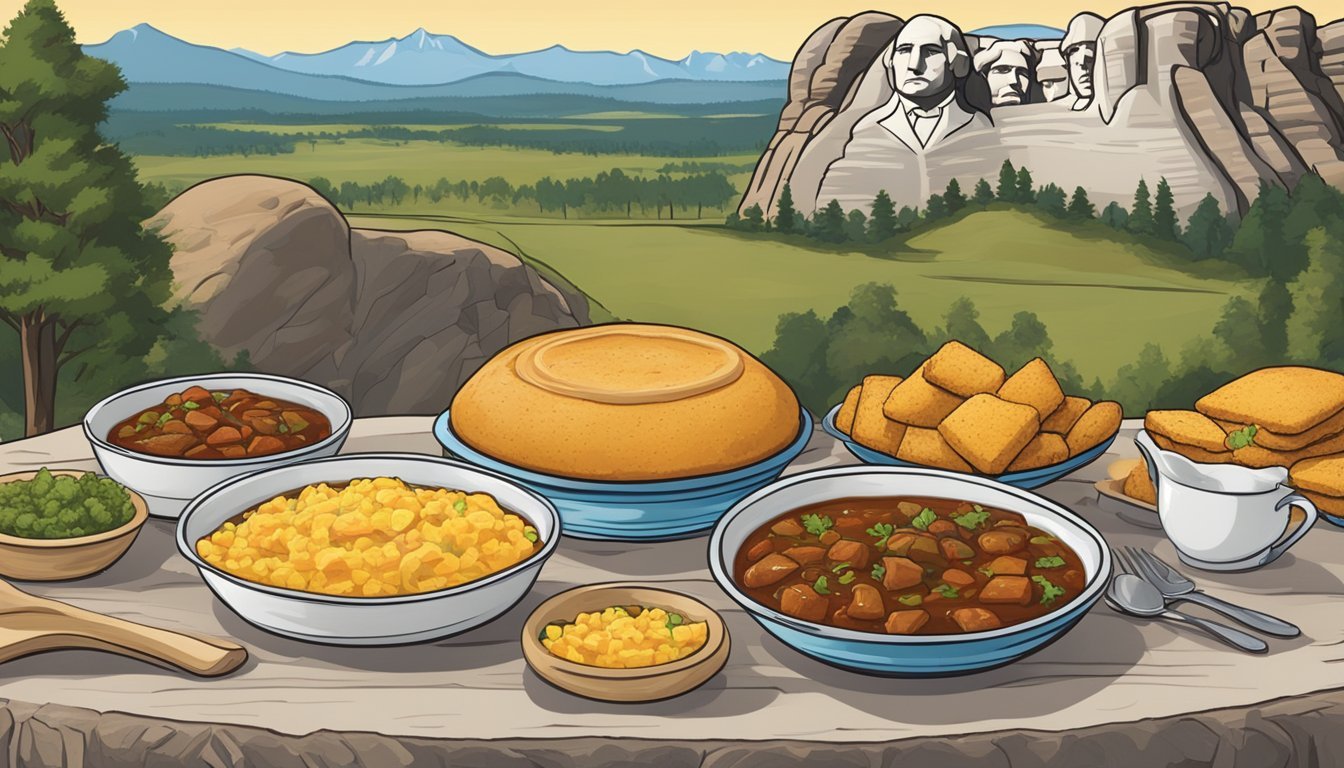What Food is South Dakota Known For?
Discovering the State's Signature Dishes
South Dakota's culinary landscape offers a unique glimpse into the traditions and history of the state through its distinctive foods. From the prairies to the kitchens, the state's cuisine reflects the rich cultural diversity and agricultural abundance. The state's culinary scene is characterized by rustic, hearty dishes that have been shaped by the indigenous people, European settlers, and the natural resources found within its borders.
Among the most iconic dishes associated with South Dakota is chislic, a simple yet savory skewered meat dish commonly made from lamb, mutton, or beef. This delectable item isn't just another kebab – it stands apart due to its preparation, seasoning, and the tradition it carries as the state's official nosh. Each piece of meat is cubed, deeply seasoned, and fried or grilled before being served, often with crackers creating a culinary experience unique to the state.
Another traditional fare that has become a staple in South Dakota is the bierock, a pastry pocket filled with savory ingredients like seasoned beef or pork and cabbage. This food item traces its origins to the German-Russian immigrants who settled in the region, illustrating how South Dakota's culinary heritage is deeply interwoven with the stories of its inhabitants. Together, these dishes paint a picture of a cuisine that is unpretentious yet bold, echoing the spirit of South Dakota itself.
Traditional South Dakota Dishes
South Dakota's cuisine is a reflection of its diverse heritage and local ingredients. From the official state nosh to the desserts brought by German immigrants, the culinary landscape is distinguished by unique preparations of meat, as well as traditions inherited from Native American culture.
Chislic
Chislic is South Dakota's beloved and unassuming regional snack. Typically made from cubed beef or lamb, the meat is seasoned with salt and garlic, then deep-fried or grilled. It's often served with a variety of dipping sauces, ranging from garlic salt (how long does garlic salt last?) to chili dips. Dakotah Steakhouse and Urban Chislic are among the establishments known for popularizing this dish, and the annual Chislic Festival is a testament to its importance in local culture.
Indian Tacos and Fry Bread
Two dishes steeped in Native American tradition are Indian Tacos and Fry Bread. Indian Tacos consist of fry bread topped with ingredients like ground beef, lettuce, cheese, and tomatoes. Fry Bread itself is a simple, deep-fried bread that serves as a versatile staple at many powwows. Accompaniments like wojapi, a Native American berry sauce, are also common.
State Desserts
Kuchen, a German pastry with a custard filling and various fruit toppings, stands as South Dakota's official state dessert. German immigrants introduced this rich and flavorful dessert, which can be found in pie shops and family kitchens alike. Additionally, the state honors the pie as a cherished dessert, enjoying variations such as custard, fruit, and more.
Wild Game Specialties
South Dakota takes pride in its game dishes, brilliantly showcasing bison (What wine goes well with bison?), pheasant, and venison (What wine goes well with venison?). Bison meat is often served as hearty buffalo burgers, while pheasant, the state bird, is featured in unique appetizers like pheasant poppers. These wild game specialties reflect a deep connection to the land and a tradition of hunting and outdoor life that is central to South Dakota's way of living.
Iconic Ingredients and Foods
South Dakota's culinary landscape is a reflection of its history and geography, with a harmonious blend of the indigenous food culture with hearty elements from German and Central European settlers.
Bison and Ranching
The region is synonymous with bison, an animal once essential to the Plains Indians and now intertwined with the state's ranching culture. Bison meat is known for being leaner than beef and is a staple in South Dakota cuisine. Ranching is a pillar of the local economy, with bison and cattle providing a significant portion of the meat found in South Dakota's dishes.
German and Central European Influences
South Dakota's food scene is heavily influenced by its German and Central European heritage. Dishes such as kuchen, a German pastry, embody this connection and are celebrated as the official state dessert. Kulache, another pastry with Central European roots, also finds its place in local culinary traditions. Annual festivities like Czech Days highlight the enduring influence of Central European gastronomy in the state.
Native American Contributions
The Lakota and other Native American tribes have significantly shaped South Dakota's food identity. Traditional dishes like fry bread and wojapi, a type of berry sauce, are integral to the region's Native American cuisine. Wasna, a blend of minced bison, berries, and fat, is also a traditional Lakota dish that emphasizes the resourceful use of local ingredients.
Local Produce and Harvest
Local waters provide walleye, the state fish, prized for its mild flavor and often found in local dishes either fried or grilled. Chokecherries and other berries native to the area are popular for making jams, jellies, and desserts. South Dakota's fertile land yields various nuts (how long do nuts last?) such as walnut, which are incorporated into both sweet and savory dishes. Local harvests emphasize the connection between South Dakota's agricultural abundance and its cuisine.
Modern Culinary Scene
The culinary landscape of South Dakota is anchored by a fusion of traditional flavors and contemporary dining experiences, characterized by restaurants that highlight local ingredients and events that celebrate food culture.
Restaurants and Dining
In Rapid City and Sioux Falls, dining establishments range from cozy eateries to upscale bistros. These cities are hubs for culinary innovation, with restaurants serving a blend of global and regional cuisines. Mount Rushmore and Keystone areas cater to the tourist population with dining spots offering panoramic views and dishes such as the buffalo burger and steak.
Rapid City: Known for its farm-to-table approach, highlighting organic produce.
Sioux Falls: Boasts a variety of eateries that offer fusion cuisine, incorporating a modern twist on classic South Dakota dishes like chislic, usually made from deep-fried or grilled meat cubes.
Food Festivals and Events
South Dakota celebrates its rich culinary heritage with numerous food festivals throughout the year. Such celebrations include:
Chislic Festival: A dedicated event for the state's beloved dish, chislic, uniting food enthusiasts each year.
Schmeckfest: An annual festival in Freeman that showcases German heritage through food.
Tabor Czech Days: A festival that highlights Czech culture and cuisines in the town of Tabor.
Contemporary Food Trends
The state has seen a rise in food trends that focus on health-conscious choices and sustainability. Gluten-free options are becoming more common, and there's a growing demand for organic and farm-to-table offerings. Many South Dakotans are embracing:
Gluten-Free: A noticeable increase in gluten-free selections in restaurants.
Farm-to-Table: Restaurants and consumers alike are supporting local agriculture by using locally-sourced ingredients.
South Dakota's modern culinary scene reflects a dynamic blend of tradition and innovation, creating a unique dining experience that both honors the past and embraces the future.
Food Preparation and Recipes
South Dakota's culinary heritage is reflected in its diverse food preparation techniques and revered recipes. From grilling meats to crafting fluffy pastries, the state's food scene is a testament to tradition and taste.
Cooking Techniques
Grilling and Smoking: South Dakota's iconic dish, chislic, traditionally involves grilling or deep-frying cubed meat—often lamb, beef, or game such as deer. The cooking process imparts a rich flavor and a desirable char to the meat which can be likened to a shish kebab in its skewered, bite-sized form.
Ground Beef Dishes: The region’s bierock is a well-loved ground beef stuffed bread pocket. Flour, water, and yeast form the dough, enclosing a filling of seasoned ground beef, pork, or a mixture of both, often combined with sautéed cabbage and onions.
Authentic Recipes
Kuchen: As the state dessert, a typical South Dakota kuchen recipe calls for a pastry base made from flour and lard, filled with custard and fruit. The ingredients are then baked into a pie-like dessert, drawing on German baking traditions.
Indian Taco: A representation of cultural fusion, the Indian taco starts with frybread, made from a simple dough featuring flour and lard, which is then fried until golden and topped with seasoned ground beef, beans, lettuce, cheese, and tomatoes.
Wojapi: A traditional Native American berry sauce often paired with frybread. The berries are typically simmered to a thick consistency, with minimal added sugar to let the natural sweetness prevail.
Baking Traditions
Pastries and Pies: South Dakota baking is known for its range of pastries, from kuchen to kolaches—yeast rolls filled with fruit. Meanwhile, pies make frequent appearances on tables around the state, with fruit or custard fillings encased in buttery, flaky puff pastry or traditional crusts made from flour and lard.
Flour-Based Recipes: Flour is a staple ingredient across South Dakota recipes, utilized in creating the structure for the state's breads and pastries. Whether it's in a hearty bierock or a delicate kuchen, the right flour can make all the difference in texture and taste.
Cultural and Historical Context
South Dakota's culinary landscape is deeply ingrained with the state's history, encompassing the traditions of both historical settlers and Indigenous peoples. The food in this region provides a window into the past, revealing influences from European immigrants to the native tribes that resided on the land long before them.
Historical Settlers and Influence
South Dakota's European settlement predominantly came from Germany, Czech Republic, and Russia. These Central European and Russian immigrants brought with them their culinary traditions, leading to the incorporation of dishes like kuchen, a German cake-like pastry, into local cuisine. Over time, these influences have carved a unique niche in South Dakota's food history that perseveres to this day.
Indigenous Cultures and Food
The Lakota and other Native American tribes contribute extensively to South Dakota's food heritage. Traditional dishes such as Indian tacos and frybread have roots in Indigenous cultures. Dishes like wasna, a blend of pounded meat mixed with berries and fat, underscore the resourceful use of local ingredients by the Native American tribes of South Dakota, further enriching the state's diverse food landscape.
South Dakota Landmarks and Their Food
Iconic landmarks such as Mount Rushmore, Crazy Horse Memorial, and the Badlands National Park are emblematic of South Dakota's history and attract visitors worldwide. They're often areas where visitors can sample the state's foods and experience a taste of regional history. Nearby, the Black Hills region is known for its wild game and local trout, which are mainstays in the local diet and reflect the state's connection to its land and history.





